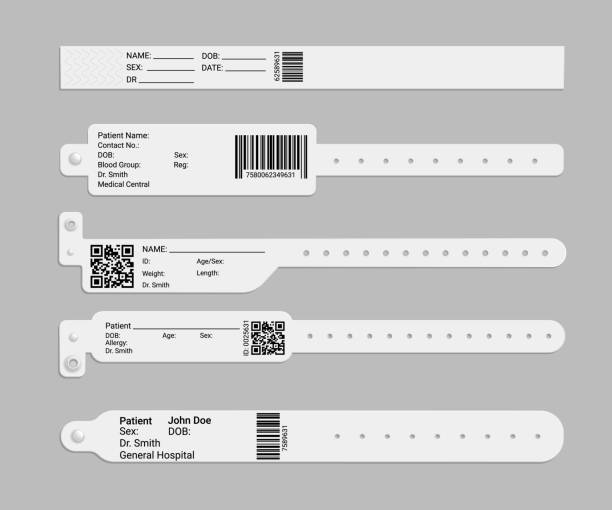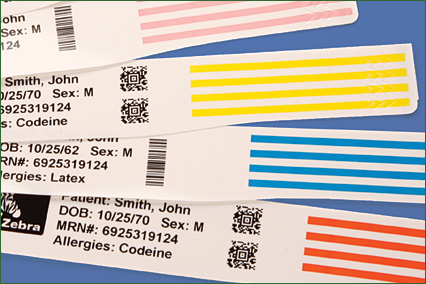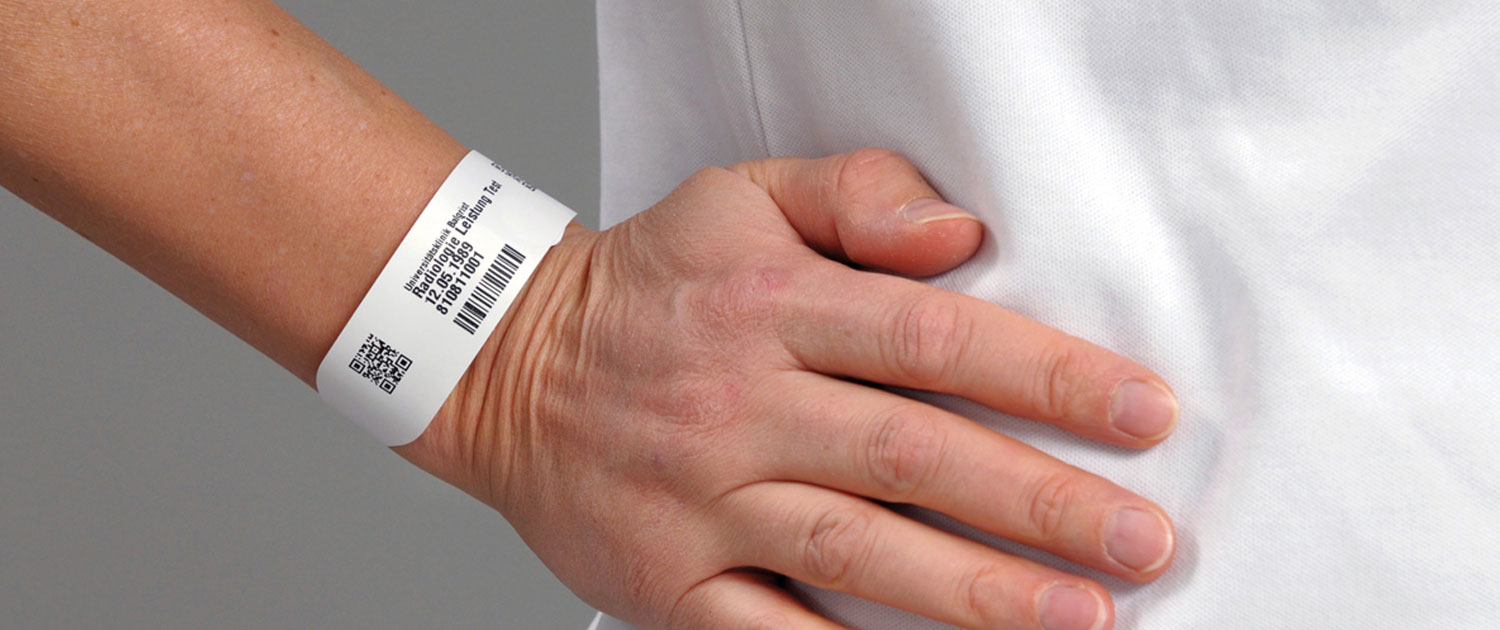Patient Identification Band: A Crucial Tool for each Doctor
Patient Identification Band: A Crucial Tool for each Doctor
Blog Article
Streamlining Patient Treatment With Effective Recognition Bands
The application of efficient identification bands is a crucial component in enhancing individual care within medical care settings. These bands not only serve to minimize the dangers connected with person misidentification but additionally improve communication amongst clinical workers, therefore promoting a safer atmosphere. Numerous sorts of recognition bands satisfy certain needs, from durable wristbands for grownups to specialized bands for babies and important cases. As the landscape of individual identification advances, one have to consider the implications of these systems on general healthcare shipment and client end results. What technologies await in this crucial area?
Relevance of Client Identification
Guaranteeing accurate person recognition is vital in health care settings, as it directly affects the security and high quality of treatment supplied. Misidentification can result in significant mistakes, consisting of providing the incorrect medication, carrying out wrong procedures, or miscommunicating important individual details. Such errors not only endanger patient security however can likewise result in lawful implications and decreased depend on in healthcare systems.
Reliable individual recognition is fundamental to developing a secure environment where people obtain tailored and proper treatment. It facilitates the exact documentation of case histories, allergies, and therapy plans, making certain that healthcare service providers have access to crucial info in all times. Robust recognition protocols help simplify interaction amongst clinical team, improving partnership and minimizing the threat of blunders.

Kinds of Identification Bands
Recognition bands play a critical duty in keeping accurate individual records and improving safety within medical care atmospheres. Numerous sorts of identification bands are made use of to accommodate the details needs and requirements of various client populaces.

Another type is the ankle joint band, which is specifically beneficial for infants and infants, making sure that identification continues to be undamaged even during care treatments. Specialty bands, such as those for allergy notifies or drop danger signs, provide extra layers of safety and security by attracting prompt attention to vital patient problems.
Just recently, digital identification bands have actually gained appeal, integrating barcodes or RFID modern technology that can be scanned to promptly obtain person data. These bands improve workflows and decrease the threat of human error during client identification processes.
Advantages of Reliable Recognition
Efficient recognition of patients through making use of recognition bands contributes considerably to total patient safety and care quality. By guaranteeing that each person is properly identified, doctor can properly match clinical therapies and procedures to the right person, lessening the danger of mistakes. This is especially important in atmospheres with high client turnover, where the possibility for misidentification is greater.
Moreover, reliable recognition bands improve communication among health care teams. Clear and precise patient identification fosters collaboration and ensures that all employee know a patient's particular needs and case history. This communication is important for delivering worked with treatment, particularly in emergency situations where time is essential.

Ultimately, efficient identification via the use of identification bands not only safeguards patients yet additionally promotes a culture of safety within healthcare facilities (Patient Identification Band). By focusing on exact identification, healthcare organizations can improve outcomes and enhance the total client experience
Executing Recognition Solutions
While the value of individual identification is well acknowledged, the application of robust recognition systems presents a complicated difficulty for medical care companies. Developing efficient identification systems calls for a thorough technique, encompassing modern technology, workers training, and procedure combination.
First, companies need to select ideal recognition innovations, such as barcode scanning, RFID, or biometric systems. Patient Identification Band. These technologies need to be examined based on price, functionality, and compatibility with existing framework. A pilot program can aid determine potential issues before full-scale application
Following, thorough training for staff is necessary. All personnel should understand the significance of exact patient recognition and be skillful in making use of the chosen modern technologies. Regular training updates and evaluations can strengthen ideal techniques and make certain ongoing compliance.
Furthermore, healthcare companies must establish standard treatments for person identification throughout all departments, boosting and reducing discrepancies communication. Regular audits can help recognize voids in adherence to these protocols.

Ultimately, an efficient execution of identification systems not only enhances patient security however likewise promotes a culture of accountability and diligence within health care settings, guaranteeing trustworthy and consistent patient care.
Future Trends in Patient Identification
Improvements in innovation are readied to transform patient identification practices in healthcare setups. The assimilation of biometric identification methods, such as fingerprinting and facial recognition, is my explanation anticipated to improve precision and safety. These modern technologies can substantially decrease the risk of misidentification, making certain that clients receive the proper therapies and medications.
Moreover, the application of blockchain technology for person documents is gaining grip. This decentralized strategy can give a safe and tamper-proof approach for handling patient identities, consequently simplifying accessibility to important info throughout various health care service providers.
An additional pattern is the increasing usage of mobile wellness applications that take advantage of QR codes for individual recognition. These applications enable real-time updates and easy accessibility to client information, encouraging medical care experts to make informed decisions promptly.
Furthermore, fabricated intelligence (AI) is positioned to play an essential duty in assessing patient identification information, recognizing patterns, and forecasting possible recognition errors before they happen.
As these technologies evolve, they guarantee not only to improve client security but also to enhance the overall efficiency of medical care shipment systems. Embracing these advancements will certainly be essential for future-proofing individual care methods.
Verdict
In verdict, reliable recognition bands are necessary for enhancing client security and care quality within health care settings. By minimizing the risks related to misidentification, these bands facilitate timely and accurate details access, inevitably boosting communication among see here now doctor. The implementation of robust identification systems not only fosters a culture of safety but also settings healthcare organizations to adapt to future trends in individual recognition innovation, ensuring optimal results for patients in varied scientific atmospheres.
As the landscape of patient recognition evolves, one must consider the effects of these systems on overall healthcare distribution and individual outcomes.Reliable patient recognition is fundamental to developing a safe atmosphere where people get ideal and tailored care. Inevitably, focusing on efficient patient recognition techniques not just fosters a society of security yet additionally adds to boosted individual outcomes and general complete satisfaction with medical care services.
Efficient identification of patients via the usage of recognition bands contributes significantly to general patient security and care quality. The execution of robust identification systems not just cultivates a culture of security yet also settings medical care institutions to adjust to future trends in client recognition technology, guaranteeing optimum results for individuals in varied clinical atmospheres.
Report this page